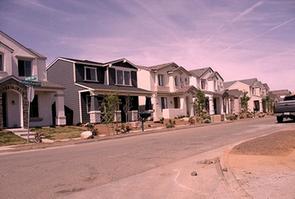 Karen Thompson Walker was born and raised in San Diego, Calif., where The Age of Miracles is set. She studied English and creative writing at UCLA, where she wrote for the Daily Bruin. After college, she worked as a newspaper reporter in the San Diego area before moving to New York City to attend the Columbia University MFA program.
Karen Thompson Walker was born and raised in San Diego, Calif., where The Age of Miracles is set. She studied English and creative writing at UCLA, where she wrote for the Daily Bruin. After college, she worked as a newspaper reporter in the San Diego area before moving to New York City to attend the Columbia University MFA program.
Walker, a former book editor at Simon & Schuster, wrote The Age of Miracles in the mornings before work--sometimes while riding the subway.
She is the recipient of the 2011 Sirenland Fellowship as well as a Bomb magazine fiction prize. She lives in Brooklyn with her husband.
A book about the end the world is even more poignant when narrated from a child's point of view. Can you tell us about your inspiration?
Even though The Age of Miracles is about a disaster that affects the whole world, it was important to me that the story feel intimate. Focusing on the life of one young girl allowed me to write about an enormous catastrophe in a very personal way.
At the same time that the world is undergoing this radical change, Julia is struggling with her own time of upheaval. The events of her young life--the loss of friendships, a sense of disillusionment with her parents, the beginnings of love--are unfolding on a small scale, but for her, these things are just as disorienting as the environmental changes brought on by the slowing. I liked the idea of a narrator who would explore both kinds of changes with equal care.
Did your experience as an editor influence your approach to writing a novel?
Working as an editor was like being a professional reader. With the help of some great mentors, I gradually became a better reader, and that made me a better writer. My sentences got a little sharper, my stories a little more fluid. As an editor, I used to think of myself as a kind of representative of a book's future readers, someone whose job it was to identify the parts of a story that felt slow or unclear or underdeveloped. For me, a big part of learning to write fiction was learning to imagine the reader and then to empathize with that imagined reader--to begin to sense what might move or confuse him, what might excite or delight her. Working as an editor helped me develop that skill.
 Do you see this book being intended for a young adult audience?
Do you see this book being intended for a young adult audience?
Julia narrates the book as an adult looking back on a pivotal time in her childhood, and I really wanted the book to have access to both perspectives: the insight and wisdom of the older Julia as well as the special point of view of an observant, tender-hearted young girl. Even though I wrote the book with adult readers in mind, I would be thrilled if young adults read it as well.
The political complexities you introduce, with a minority group that is persecuted for living by "real time," is evocative of real-life bigotry. Can you tell us about your decision to make human persecution a theme in this story of natural disaster?
It seemed inevitable to me that the extreme changes brought on by the slowing would lead to a certain amount of social conflict. I think that in times of great upheaval and fear, people are especially likely to ostracize one group or another. In the book, as the rotation of the earth slows, and the days begin to fall out of synch with the 24-hour clock, most of society chooses to remain on traditional "clock time," even though it means that darkness and light no longer correspond to the night and the day. The "real-timers" are people who refuse to abide by this new system. These people are rebels and free spirits, and they make other people nervous.
The irregular climate brought on by the slowing, and the extreme heat, are also the effects scientists predict will be brought on by global warming. Is this a cautionary tale for us about protecting our environment?
I wanted the slowing to feel real, so I often borrowed details from reports on the various threats that face our real world. In the book, birds fall from the sky, whales wash up on beaches, and there are radical changes in the weather. But I really wanted this to be a story about people, a close-up view of a family facing an extreme situation. I realized as I wrote the book that when ordinary life is under threat, ordinary life begins to seem kind of extraordinary. I was just as interested in trying to capture the shimmer of daily life as I was in exploring the strange consequences of the slowing. --Ilana Teitelbaum

